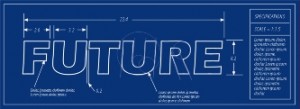 When I conduct client workshops I often ask participants this question: What could your competitors be developing for your customers right now that you don't currently offer?
When I conduct client workshops I often ask participants this question: What could your competitors be developing for your customers right now that you don't currently offer?
We know it is impossible to draw an accurate picture of the future. As Yogi Berra said, "It's tough to make predictions, especially about the future." But we continue to offer our best guesses because we want to know what the ‘great unknown' might hold. Optimistically, we see the future as having limitless possibilities. On the other hand, there is pressure in the short term to invent the future for our customers before the competition does.
When I do these brainstorming sessions, participants are encouraged to break the rules in order to uncover fresh ideas; to account for worst case scenarios; and to evaluate risk-reward tradeoffs. If people are too close to the status quo in their industry, I have them shift into a completely different industry where they are the actual customers. If they work in manufacturing, for example, they usually have no problem articulating what they want from their mobile phone company in the future. This exercise, of course, helps them to look at their own products and services from the customers' point of view.
This brainstorming is not to be done casually. That is why a disciplined approach is needed. We ask our groups to challenge market sector assumptions through creative perspectives and patterns. The significant impact of new technology always must be considered. Participants must figure out ways in which their organization can reverse engineer their futuristic ideas faster than their competitors.
To assist in this creative undertaking, I recommend Jane Buckingham's What's Next. She has compiled the opinions of experts in 50 fields about their expectations for the future Reading it will provide you with perspective of how logically changes can occur, based on current trends. The future is, in fact, a series of small steps that lead to bigger change. Change happens progressively over years but we must aggressively pursue it, since it can happen faster than we think. Therefore, we have to be the architects of the future and create it in small ways that will lead to larger trends.
The most important determination, however, in changing the future will be how the changes will it make your customers feel. The goal is to listen to our stakeholders and try to improve the way they experience the world.
Can you imagine your future without your customers? Of course not. That is why we make sure the model includes them. Scenario planning, which used to be a luxury, is now essential for all parts of every organization. The good news is that it's doable. It requires a comprehensive knowledge of the present and getting better educated about customer needs that are still out there. Get everyone in your organization focused on a different kind of future. It will generate heightened energy and will inspire teams to work collectively on actions that will get you there.
The future will belong to (drum roll, please) the organizations that have the most committed customers. Everyone else risks mediocrity and perhaps extinction. Design solutions—both products and services—at every touchpoint with your customers. When you make a better future possible for your customers, they will become amazingly committed to you. By being customer-centered, you will define a space in your client relationships that is way ahead of your competitors—all because you framed your opportunities by thinking like your customers.

Bill, I very much appreciate your positioning this as designing a better future *for your customers*. Seems like we more often see the focus solely on designing a more profitable future for the brand, which obviously misses that the former is the best path to the latter. Putting your workshops participants in the customer's position seems like a very smart way to help them adopt that perspective.
As I read through your approach it brought to mind a related technique I heard a marketing firm discuss at a conference a few years back -- they advocated using personas to make customer segments more "human" (something I was familiar with from my years in usability and user experience design). But they also recommended taking it one step further by creating "future-selves" for your personas -- basically projecting them 5, 10 and 15 years into the future to imagine how their needs, interests and buying power would evolve over time. It struck me as another potentially powerful technique for determining the future of any business.